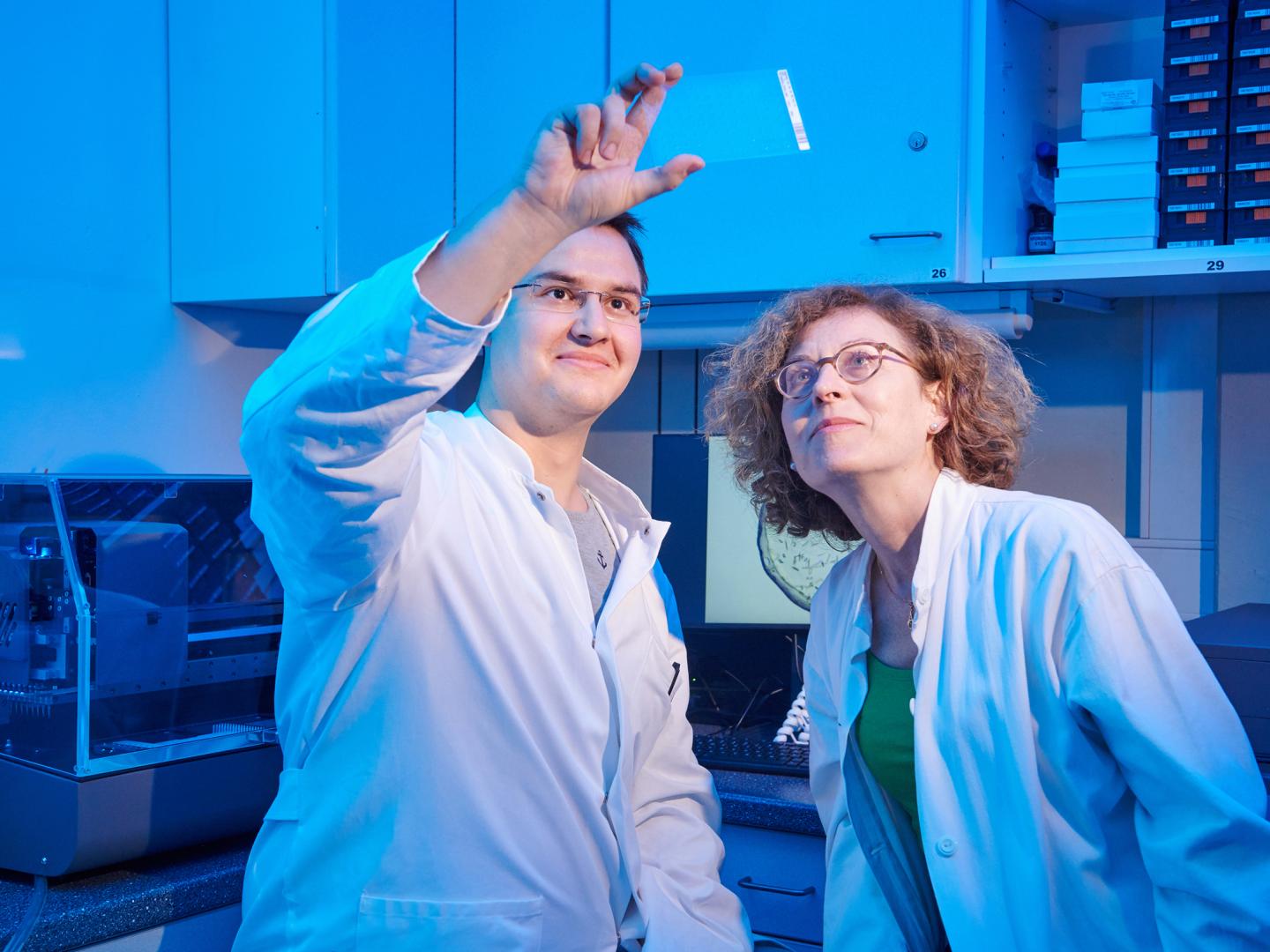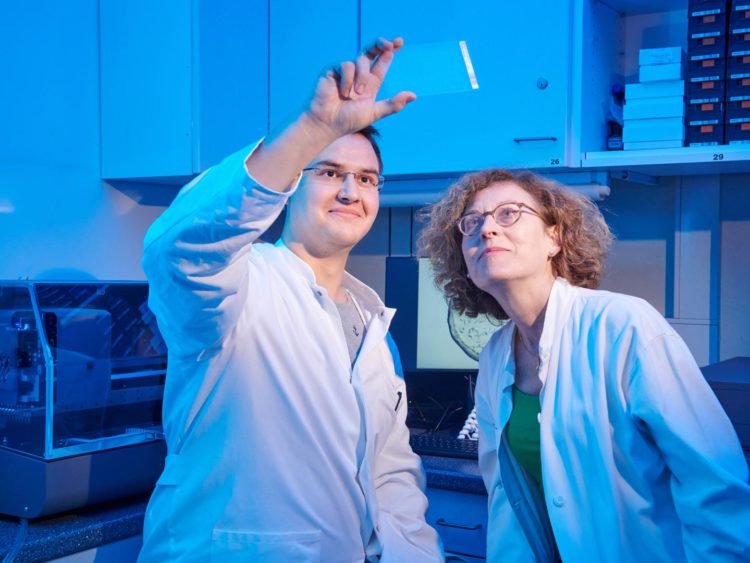Study by the universities of Bonn and ShanghaiTech opens up perspectives for the development of painkillers

Credit: © Photo: Volker Lannert/Uni Bonn
Together with colleagues from Shanghai, Brussels, Canada and the USA, researchers from the University of Bonn have uncovered the binding mechanism of an important pain receptor. The results facilitate the development of new active substances. The opioids used today to treat severe pain can be addictive and sometimes have life-threatening side effects. The results are published in the renowned journal Science Advances.
Opioids are among the most effective painkillers available today. They include for instance morphine or oxycodone, which has been prescribed very carelessly in the USA. With serious consequences: Hundreds of thousands of patients have become addicted; many of them later ended up on drugs such as heroin or fentanyl.
Oxycodone binds to so-called opioid receptors in the body. There are three different types: MOP, DOP and KOP. The painkillers available to date mainly activate the MOP (also called μ-opioid receptor). However, stimulating MOP can not only be addictive, it can also have life-threatening side effects. The most serious is respiratory paralysis, which is why the most common cause of death after heroin use is respiratory arrest.
“Drugs that selectively bind to the DOP receptor probably do not have these dramatic side effects,” hopes Prof. Dr. Christa Müller from the Pharmaceutical Institute at the University of Bonn. The emphasis is on “selective”: The opioid receptors are so similar that many drugs activate all three forms. In order to find substances that only dock to the DOP receptor, it is therefore necessary to know exactly what happens during the binding process.
Spatial structure made visible down to the atomic level
The current study can now answer this question. “We have activated the DOP receptor with two different molecules, purified the complex and then elucidated its structure using X-rays,” explains Tobias Claff, who carried out the majority of the experiments. For this purpose, the complex of receptor and active substance is transformed into a crystalline state. The crystal lattice deflects the X-ray light in a characteristic manner. The intensity distribution of the diffracted radiation can therefore be used to deduce the spatial structure of the complex, right down to the arrangement of each individual atom.
“This enabled us to show which parts of the receptor are responsible for binding the drugs,” says Claff. “This knowledge should now enable the development of targeted new substances that only activate DOP.” There is great interest in such drugs, not least because, unlike its MOP counterpart, the DOP receptor is not primarily effective against acute pain, but against chronic pain. This is currently very difficult to treat.
X-ray crystallography is not a new technique. However, the structure of G protein-coupled-receptors (including opioid receptors) could not be resolved until recently. These membrane proteins are located in the thin, fat-like membrane that surrounds the cell contents like a kind of bag. Their fat solubility means that they have to be stabilized at great effort during crystallization. Otherwise they denature and change their spatial structure as a result. “There are only a few laboratories in the world that are capable of dealing with these problems,” emphasizes Christa Müller.
At the University of Bonn, aspiring pharmacists can go abroad during their master’s or state examination program. The Institute has a broad network of cooperation partners – a fact that is regularly rated very positively in the CHE University Ranking. Tobias Claff used this opportunity: “I spent a year of my master’s program at the iHuman institute of the ShanghaiTech University,” he explains. “In the last few years, the crystallography of membrane proteins has been crucially advanced there.” Claff learned the complex method in Shanghai – a know-how that now also benefits his home university, to which he has meanwhile returned.
Prof. Müller emphasizes that it is not often that a master’s student tackles such a complex problem. “This success is an extraordinary achievement,” she says. “It also demonstrates the excellent position of the Pharmacy School with its international exchange program.”
###
Publication: Tobias Claff, Jing Yu, Véronique Blais, Nilkanth Patel, Charlotte Martin, Lijie Wu, Gye Won Han, Brian J. Holleran, Olivier Van der Poorten, Michael A. Hanson, Philippe Sarret, Louis Gendron, Vadim Cherezov, Vsevolod Katritch, Steven Ballet, Zhi-Jie Liu, Christa E. Müller, Raymond C. Stevens: Elucidating the active delta-opioid receptor crystal structure with peptide and small molecule agonists. Science Advances, DOI: 10.1126/sciadv.aax9115
Contact:
Prof. Dr. Christa E. Müller
Pharmaceutical Institute at the University of Bonn
Department of Pharmaceutical and Medicinal Chemistry
Tel. +49 (0)228-732301
E-mail: [email protected]
Media Contact
Dr. Christa E. Müller
[email protected]
49-228-732-301
Related Journal Article
http://dx.





